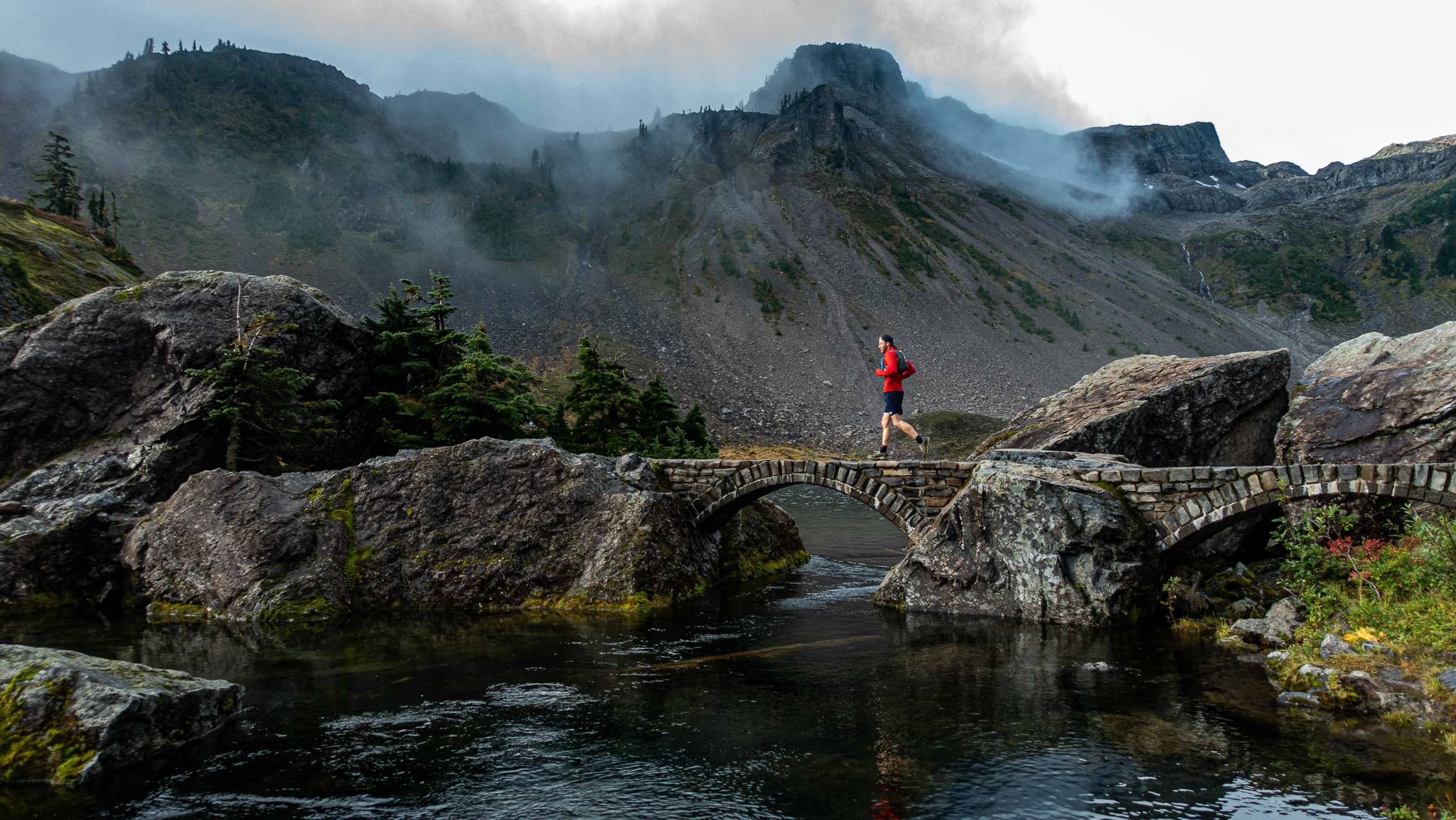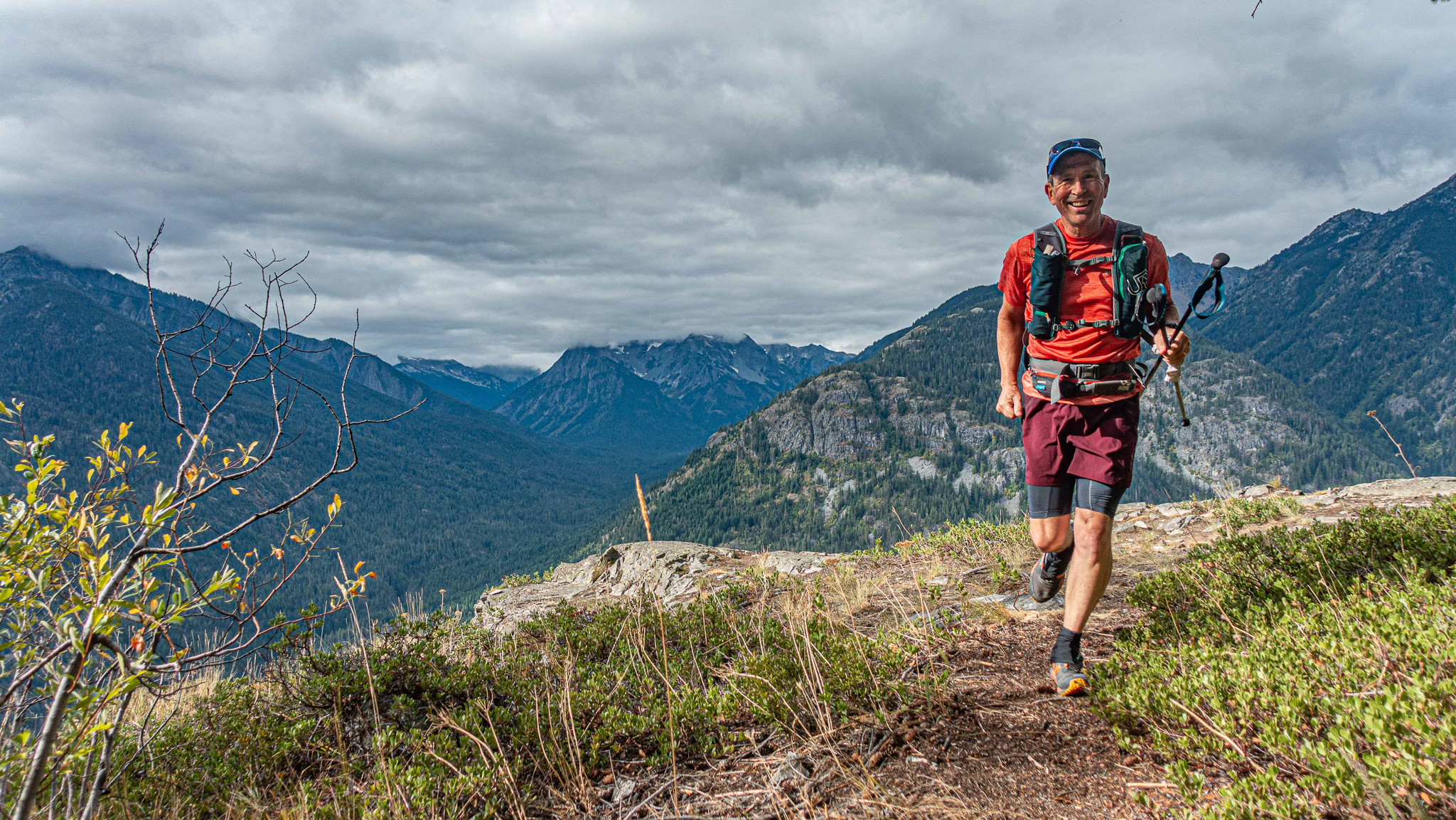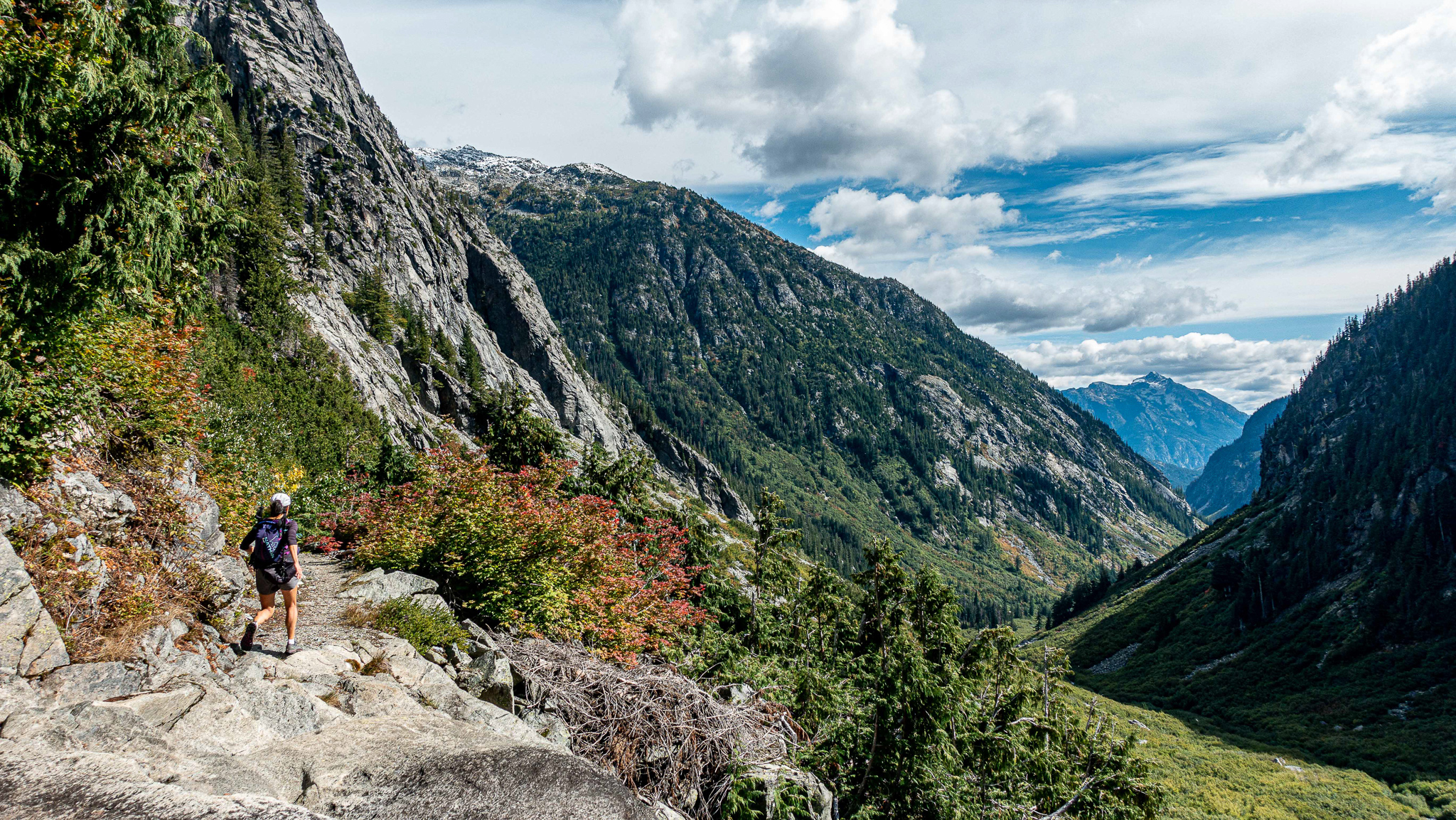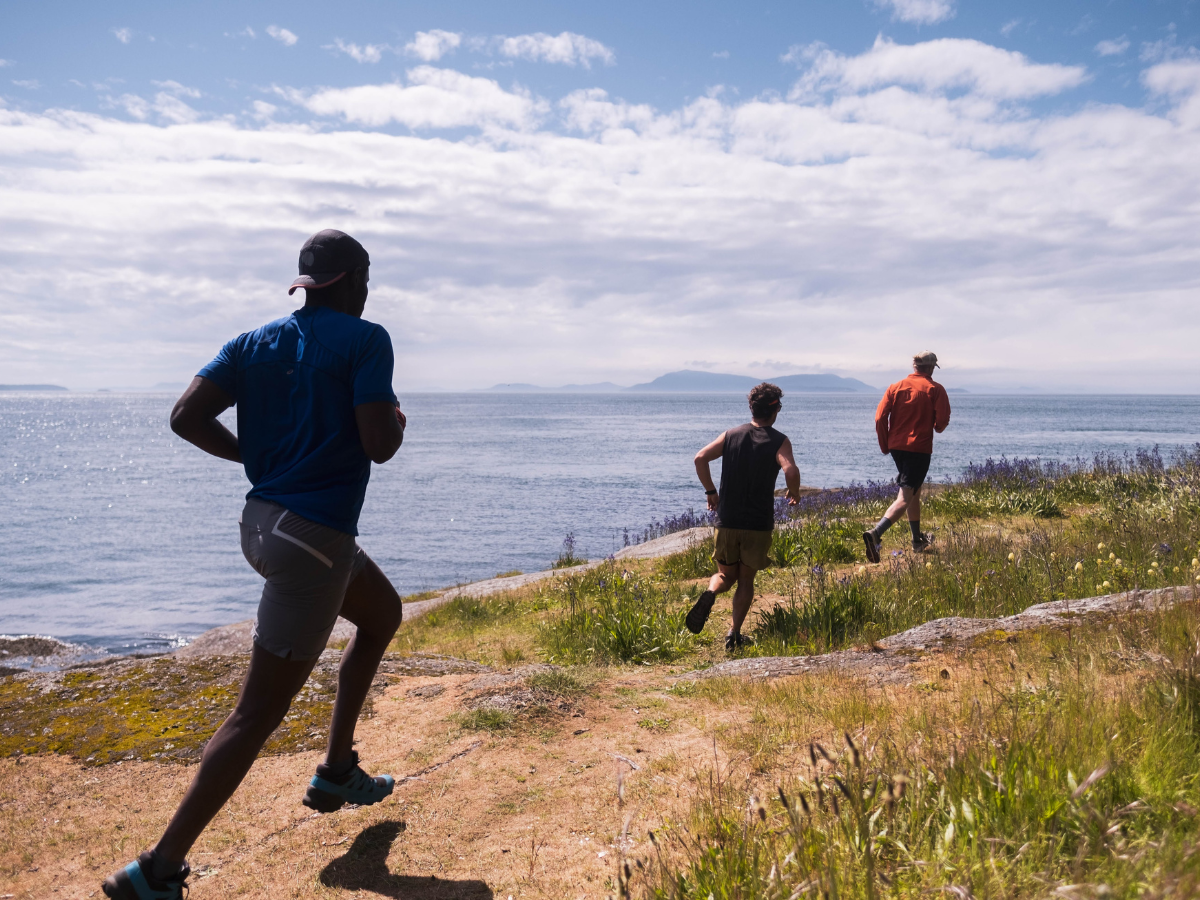Gait and specifically human bipedal gait is enormously complex. When we add speed to accelerate our gait- ie: trail running- any latent weaknesses or postural discrepancies will often magnify and multiply. This can result in decreased performance output, nagging soreness and muscular tenderness, or outright injury.7 In this blog we’ll break down the two primary phases of gait and why they matter for your running form and health.

Running and walking gait are comprised of two primary phases: stance phase and swing phase. Generally speaking, the stance phase is when your foot is in contact with the ground and the swing phase is when your foot is airborne.1,3 Within each of these larger phases there are subdivisions where it’s possible to further dissect movements to a minute level of detail. We won’t be going that microscopic, but it is important to know that running gait includes an important division within the swing phase; a “float” phase. Float phase is the point at which both feet are off the ground for a nanosecond before your opposite foot strike begins. Walking does not contain a float phase which means the left or right foot is always in contact with the ground. 1,3
So, why does this matter for runners? Why should you care that you’re catching a little air with every step? Well- it’s because float stage, while an essential component of being able to move faster than a walk, also means runners are contacting the trail surface with a force that is at least two times that of walking.3
It may be patently obvious to most readers but descending from a greater height (like the airborne float phase of the gait cycle) equates to a greater impact each time your foot hits the trail. Harder surfaces underfoot increase the compounding effect running has on joints and soft tissues generally; all the more reason to stick to the trails wherever possible instead of pavement.

Keeping in mind the inevitable fact that running subjects our bodies to greater joint stress than walking, the next place we need to go is a discussion about what happens when we combine those greater stresses with aberrant gait patters. Overpronation and supination are terms most runners have probably heard of, but here’s a quick recap.
Overpronation often coincides with flatter arches and means you’re landing mostly along the medial (inner) edge of the foot. Supination corresponds with higher arches and a laterally weighted footfall, typically from the outside of your heel through to your little toe.2
There is some degree of pronation and supination that naturally occurs when you run, and biomechanically this base movement is totally ok. In fact, these movements- to some degree- are what enable the joints of the foot and ankle to do their choreographed work.1 But when these patterns become excessive or are compensatory for weakness higher up in the kinetic chain (think: knees, hips, and low back) lingering soreness and injury often ensue. For example: if your knees tend to deviate toward the midline during the float phase and impact the ground in the same fashion that will eventually cause asymmetric wear and tear on your tissues over time. The joints of the body can and must move independently of each other, but in a complex movement like running the interplay between the hips, knees, ankles, and feet is constant and intricate.7
Think of it like a car: the timing belt, tires, transmission, clutch and steering are all moving parts that can wear in irregular and detrimental ways if they’re a little askew. Like a car, your body will function best when all of its parts are aligned and working smoothly.

Have you ever taken a look at the bottom of your shoes and noticed that some parts wear out much faster than others? The heel of the shoe is an especially good place to start your analysis. If the inner or medial surface of your shoes seems to wear especially fast, that can suggest overpronation. A lateral or outer edge wear pattern may indicate excessive supination. This shoe wear and the overpronation or supination that causes it is often only the end symptomatic piece within a larger picture of muscular weakness or maladaptation arising pre- or post-injury. A myopic focus that only includes treating a runner’s supination or overpronation misses the series of events taking place higher up the chain that cause these things to happen.
Here is a [very] short list of issues that can contribute to altered gait:3
- Glute weakness-especially the isometric/stabilizing and eccentric/lengthening actions
- Is highly prevalent in runners and can lead to abnormal foot strike during the stance phase
- Can also be a partial culprit in a knock-kneed running posture, sometimes referred to as “Genu Valgum”
- Anterior hip flexor tightness
- Can lead to diminished hip extension during the swing phase
- Can impede upright torso stance during running generating stooped posture and low back pain
- Poor ankle mobility- particularly dorsiflexion (pulling your toes toward your shin)
- Can increase force on foot and ankle joints during the foot strike
- Can predispose runners to ankle tendinopathies if range of motion remains limited
In an ideal scenario all runners would be able to consult with a gait specialist or other qualified clinician. Since that’s not the reality for most of us there are some things to watch for with your own gait, and if you have a buddy or someone who can take a socially distanced video of you running so much the better.
[I want to stress here that comprehensive gait analysis, if that’s what you’re after, can and should be done by a qualified professional. And if you have any health concerns, current or recent injury, or other limiting health factors you should always consult a qualified healthcare provider before making any modifications to your routine]. Below are a few PNW resources with folks qualified to do gait analysis. Some providers may require a more extensive health intake and occur in a clinic setting, such as a Physical Therapist’s office. Other resources like shoe stores can offer a more cursory analysis that will give you great baseline assessment plus shoe recommendations relative to your running gait:
- Prime Sports Institute, Bellingham
- Northwest Physical Therapy & Sports Rehabilitation Center, Bellingham
- Fairhaven Runners & Walkers, Bellingham
- BBay Running, Bellingham
- Sisu Sports Performance and Physical Therapy, Seattle
- Avant Physical Therapy, Seattle
- Peak Sports & Spine Physical Therapy, Seattle + 6 other locations
- West Seattle Runner, Seattle
- Fleet Feet, 2 Seattle locations

With that said, let’s outline a few things you can make note of on your next run regarding your own running gait, and then look at tools to solve any problems that might be brewing.
- Look/feel for overpronation or supination2,3
- Overpronators typically have a flatter arch. The majority of your weight is dispersed along the inner side of your foot, or you may start your foot strike with your weight on the outside of your heel and then roll onto the inner foot as you toe off.
- Supinators may have high arches or even be bow legged. Weight during foot strike will usually be on the outside of the foot and the big toe may make little or no contact with the ground.
- Check out your knees!3
- Knock knees: do your knees knock into each other or even just brush each other continually when you run?
- Wide knees: are your knees particularly far apart, or track away from the midline?
- Hips3
- Do your hips sway outward (think: Marilyn Monroe) in the stance phase on your weight bearing leg? Or is there very little mobility in your hips and you perhaps look like a piece of rebar running down the trail?
Well, if you’ve stuck with me this far- nice work! You must also be an anatomy geek… Now it’s time for some solutions. True overpronation and supination can often be helped to varying degrees by specialized and appropriately fitted orthotics, but that’s only getting at part of the problem. Let’s take a look at some targeted strength exercises that can help mitigate the gait issues we’ve covered.
Intro Video
For overpronators:
For overpronators, knock kneed runners, and runners with Marilyn Monroe hips- You’ll want to target the glutes and stabilize your core with exercises like the following:4,5,6
- Clam Shell
- Progression=Use resistance band
- Monster Walks with Band
- Floor Bridges
- Progression=Top leg lift (side bridge), Alternating leg lift (prone bridge)
(NO Video)
- Quadruped Balance/Extension
- Progression=Weighted quadruped
- Squat to stand
- Progression=Weighted (ie: use weighted pack/belt)
- Supine hip lift
- Progression = Single leg lift
For supinators:
For supinators and runners with a bow-legged stance or ‘wide knees’ think about strengthening the inner thigh and stabilizing the core:4,5,6
- Side lunge
- Progression= Lunge with band
- Wide leg squat
- Progression=Squat to toes
- Side-lying leg lift with ball or towel
- Progression=move from towel to ball or increase size of yoga ball
- Supine leg lift with ball
- Progression=Lift arms overhead
The off season (yep, I mean right now) is the absolute perfect time to get after it with starting a strength routine that will help you build durability, stability and longevity. With all the time you’re saving without that commute into a physical workspace right now I’d hazard a guess most of us have a few extra moments of downtime in the day. Time use those bonus minutes to turn off the Netflix and turn on glutes!
References:
- Dugan, Sheila A, and Krishna P Bhat. “Biomechanics and analysis of running gait.” Physical medicine and rehabilitation clinics of North America, vol. 16, no. 3, 2005: 603-21. doi:10.1016/j.pmr.2005.02.007
- KA Kirby; Biomechanics of the normal and abnormal foot. J Am Podiatr Med Assoc, vol. 90, no. 1: 2000: 30–34. doi: https://doi.org/10.7547/87507315-90-1-30
- Novacheck, Tom F. “The Biomechanics of Running.” Gait & Posture, vol. 7, no. 1, 1998: 77-95. doi: https://doi.org/10.1016/S0966-6362(97)00038-6.
- Anonymous (2020a) Forutsetninger teknikk- Lange løp. Norge Olympiatoppen. Available: https://olympiatoppenvideo.no/folder/2._idretter/friidrett/forutsetninger_teknikk/friidrett_gen. [Accessed: 29 November 2020].
- Anonymous (2020b) Forutsetninger teknikk-Friidrett gen. Norge Olympiatoppen. Available: https://olympiatoppenvideo.no/folder/2._idretter/friidrett/forutsetninger_teknikk/friidrett_gen. [Accessed: 28 November 2020].
- Friidrettsforbund (2015) Athletix: Lower Body Øvelser som hovedsakelig trener bein og sete. Available: https://www.friidrett.no/barn-og-ungdom/athletix/ [Accessed: 2 December 2020].
Bråten, Morten og Andersen, Lars Arne (2019) Hva er uavhengig kroppsarbeid? Norge Olympiatoppen.Available: https://www.olympiatoppen.no/fagstoff/teknikk_motorikk/teknikk_motorikk/page1687.html [Accessed: 27 November 2020].

